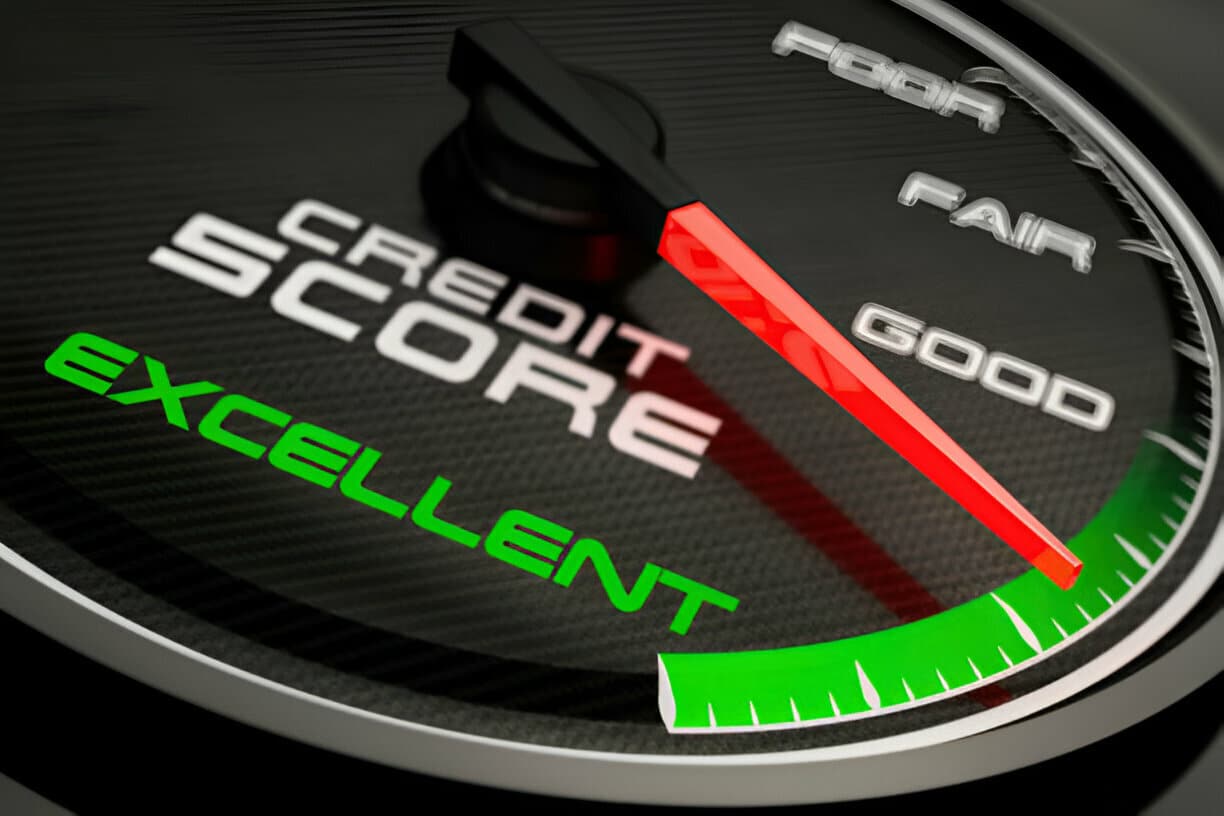Looking to improve credit score quickly? While it may seem like an impossible task, there are legitimate strategies that can boost your numbers in less time than you might think. While overnight miracles don’t exist in the credit world, targeted actions like disputing errors, reducing saldos de tarjetas de crédito, and becoming an usuario autorizado on established accounts can yield noticeable improvements within weeks rather than months or years. What specific credit report errors might be holding your score down right now? And which accounts should you pay down first for the biggest point increase?
The path to better credit begins when you understand which factors in your credit profile respond most quickly to positive changes. If you’re looking to improve credit score quickly, focusing on payment history and credit utilization can yield the fastest results. While factors like length of credit history take longer to influence, this guide will show you how to improve credit score quickly using practical, proven techniques. You’ll discover not only what actions to take, but when and how to apply them for the greatest impact in the shortest possible timeframe.
Identifying and Disputing Credit Report Errors
Credit report errors represent one of the fastest paths to score improvement, yet they remain surprisingly common. According to the Federal Trade Commission, one in five consumers has an error on at least one of their three credit reports. These errors can artificially depress your credit score by dozens or even hundreds of points, depending on their severity. If you’re looking to improve credit score quickly, correcting these mistakes can be highly effective—unlike strategies that require months of consistent behavior, removing legitimate errors can boost your score within 30 days once the bureaus verify and correct the information.
 https://thecreditpros.com/get-started
https://thecreditpros.com/get-started
The most damaging credit report errors typically fall into several categories. Identity errors include incorrect personal information like misspelled names or wrong addresses, which can cause someone else’s negative accounts to appear on your report. Account status errors might show closed accounts as open, accounts incorrectly reported as delinquent, or the same debt listed multiple times by different collectors. Balance errors that overstate your debt levels directly impact your tasa de utilización del crédito—a key scoring factor. If you want to improve credit score quickly, identifying and disputing these errors—especially derogatory marks like bankruptcies or collections that don’t belong or should have aged off—can lead to fast and meaningful improvements.
The dispute process begins with obtaining your credit reports from all three major bureaus—Equifax, Experian, and TransUnion. While AnnualCreditReport.com provides free weekly access to all three reports through December 2023, many consumers find it beneficial to stagger their requests throughout the year to maintain ongoing monitoring. If you want to improve credit score quickly, carefully review each report and create a detailed log of every potential error, noting the account name, number, the specific error, and why you believe it’s incorrect. Supporting documentation—such as bank statements, payment confirmations, or court documents—greatly strengthens your dispute and accelerates the correction process.
Filing disputes has become more streamlined through online portals offered by each bureau, though written disputes sent via certified mail provide a stronger paper trail. If you’re aiming to improve credit score quickly, ensure each disputed item is filed separately with clear, specific explanations—vague claims are often dismissed without investigation. The bureaus have 30 days to investigate and must forward all relevant details to the information provider, usually a lender or collection agency. If the provider can’t verify the information or doesn’t respond, the bureau is required to remove or correct the item. Once the investigation is complete, you’ll receive written results and a free updated report if any changes were made.
For consumers facing time-sensitive situations like imminent mortgage applications, the rapid rescore process offers a faster way to improve credit score quickly. Unlike standard disputes that can take 30–45 days, rapid rescoring can reflect updates on your credit report in just 2–7 days. However, this service is only available through mortgage lenders or brokers—not directly to consumers—typically costs $25–$50 per account per bureau, and only applies to legitimate errors or recently paid-down balances with proper documentation. Rapid rescoring doesn’t remove accurate negative information or alter your credit permanently; it simply speeds up updates that would eventually appear on your report.
Strategic Debt Reduction for Maximum Impact
Credit utilization—the percentage of available credit you’re currently using—represents the second most influential factor in your FICO score calculation, accounting for 30% of your score. If you’re trying to improve credit score quickly, targeting your utilization rate is one of the most effective strategies. While many focus on paying down debt for financial relief, strategic paydowns aimed at keeping utilization below 30%—ideally under 10%—can lead to significant score increases. Keep in mind that utilization is measured both overall and on individual cards, so even one maxed-out card can hurt your score despite a seemingly reasonable total utilization.
This dual calculation method creates an opportunity for strategic debt reduction. To improve credit score quickly, prioritize paying down credit cards that are over 50% utilized—especially those nearing their limits. Reducing these to below 30% utilization often results in a greater score boost than fully paying off a card already at 15% utilization. For example, paying off a maxed-out $500 card may lead to a quicker score improvement than making a dent in a $9,000 balance on a $10,000 limit. This strategy aligns with the debt snowball method for psychological wins, though the avalanche method may be better for long-term interest savings.
The timing of credit card payments also influences utilization more than many realize. Credit card companies usually report your balance to the bureaus on your statement closing date, meaning your utilization is based on a single snapshot—not your monthly average. Even if you pay in full each month, a high reported balance can still hurt your score. To improve credit score quickly, consider making multiple payments during the billing cycle to keep reported balances low, or contact your issuer to learn your reporting date and time your payments accordingly for optimal impact.
“Building a positive credit history after financial mistakes requires consistent positive actions over time. There are no instant fixes, but strategic debt reduction can produce meaningful improvements within months rather than years.”
Credit scores respond remarkably quickly to utilization changes—often within a single reporting cycle. If you’re looking to improve credit score quickly, strategic debt reduction can deliver noticeable results in as little as 30 days once the updated balance is reported. This tactic is especially useful for consumers preparing for major credit applications like mortgages or auto loans. To ensure maximum impact, aim to have your utilization improvements reported at least 30–45 days before applying, giving enough time for updates to reach all three bureaus and any scoring models your lender may use.
For consumers with limited funds for debt paydown, negotiation strategies can offer a practical way to improve credit score quickly without full repayment. Collection accounts often allow the most flexibility, with many agencies willing to settle for 30–50% of the original balance. Even more impactful, some collectors agree to “pay-for-delete” deals—removing the account from your credit report in exchange for payment. Though discouraged by credit reporting guidelines, this practice remains common, especially with smaller agencies. For debts not yet in collections, hardship programs may reduce interest or provide manageable payment plans, though these arrangements might be noted on your report. Keep in mind that even settled accounts can affect your score until they naturally age off.
Leveraging Authorized User Status and Credit Relationships
The authorized user strategy is one of the few legitimate shortcuts to improve credit score quickly, enabling individuals to leverage someone else’s strong credit history. By becoming an authorized user on another person’s credit card, the entire account history—payment record, account age, and utilization—often appears on your report as if it were your own. This “piggybacking” effect is especially powerful for those with thin credit files or recovering from past credit issues. If the primary account is well-managed, this strategy can boost your score by 30–50 points within a single reporting cycle.
Not all authorized user accounts are equally effective when trying to improve credit score quickly. To maximize the impact, choose a primary account with a flawless payment history, low utilization (ideally under 10%), substantial age (7+ years), and one that’s issued by a major bank reporting to all three bureaus. The nature of the relationship also plays a role—some credit scoring models weigh family connections more heavily than non-family ones. Importantly, you don’t need spending privileges or physical access to the card; the credit boost comes from being added to the account, not using it. This makes it a low-risk way for parents, spouses, or trusted friends to help.
While authorized user status can help improve credit score quickly, it comes with key limitations and risks. First, not all card issuers report authorized user accounts to the agencias de crédito—American Express and some smaller banks may be inconsistent. Second, newer FICO models have reduced the weight of these accounts to prevent abuse, though they still offer meaningful benefits. Third, this strategy links two individuals financially—any negative changes, like missed payments or high balances, will impact both credit scores. Trust and clear communication with the primary cardholder are critical to avoid unintended harm.
While the authorized user strategy can help improve credit score quickly, it raises important ethical considerations. Some credit repair companies offer “tradeline renting” services, connecting consumers with strangers who add them as authorized users for a fee. Though not illegal, these practices often violate card issuers’ terms and may be flagged as credit fraud by lenders. Major banks increasingly detect and discount such relationships during underwriting. Additionally, many lenders view authorized user accounts differently from primary accounts, especially for significant loans like mortgages. As a result, this strategy is best used as part of a broader, long-term credit-building plan—not a standalone fix.
Beyond traditional authorized user arrangements, several alternative credit-building relationships can help improve credit score quickly. Co-signed loans create shared responsibility, allowing both parties to benefit from positive payment history—but they also carry risks, as obligations can’t be easily separated. Joint accounts work similarly and are typically reserved for married couples. For those without a co-signer, tarjetas de crédito garantizadas o préstamos para la creación de crédito offer solo options, though they generally build credit more slowly. Newer financial tools now enable roommates or friends to formalize shared bill payments, reporting regular expenses like utilities or streaming services to credit bureaus to establish a positive history.
Establishing Perfect Payment Patterns
Payment history makes up 35% of your FICO score—more than any other factor—so consistent, on-time payments are essential if you want to improve credit score quickly. Recent payment behavior weighs more heavily than older history; a five-year-old late payment has minimal effect, while one missed payment today can drop your score by 60–110 points, depending on your credit profile. Fortunately, this recency bias also creates an opportunity for fast improvement—most scoring models begin rewarding perfect payment patterns within 3–6 months, with the benefit growing as your streak of on-time payments continues.
The technical definition of “on-time” payments often confuses consumers. A payment is officially considered late by credit scoring models when it’s 30 days past due—not the day after. However, this doesn’t mean you have a 29-day grace period; most lenders charge late fees immediately, and some even report sub-30-day late payments in the comments section of your credit report. While these don’t carry the weight of full delinquencies, they can still influence lender decisions. To improve credit score quickly, avoid any ambiguity—pay at least the minimum a few days before the due date and aim for consistent, timely payments to establish a strong history.
- Calendar alerts: Set multiple reminders (7 days before, 3 days before, day of)
- Automatic payments: Set up for at least the minimum payment amount
- Account aggregation: Use financial apps that display all due dates in one place
- Due date alignment: Request same due dates across multiple accounts
- Buffer accounts: Maintain a dedicated account just for bill payments
- Payment prioritization: Develop a visual system for organizing bills by due date
Recent late payments don’t have to permanently hurt your credit. If the account is otherwise in good standing, a goodwill letter to the creditor may help improve credit score quickly by removing a one-time late payment from your report. These requests are most effective when you provide a valid reason—such as hospitalization or a natural disaster—and have a solid history of on-time payments before and after the incident. Be specific about the date and amount, include your account number, and ask for removal of the late mark (not just fee forgiveness). Credit unions and smaller banks tend to be more receptive than large institutions. Some consumers use the “CFPB method,” filing a complaint with the Consumer Financial Protection Bureau if a reasonable request is denied—but this should be a last resort.
The timeline to improve credit score quickly through payment patterns depends on your current credit status. If you’re behind on payments, bringing accounts current is the first step, typically resulting in noticeable improvements within 30–60 days of the update. For accounts already in good standing, three consecutive months of on-time payments can start to improve credit score quickly, with more significant progress seen after six months. After 12 months of perfect payment history, most consumers experience substantial recovery from past delinquencies, though it often takes up to 24 months to see the full impact. This slower improvement curve explains why payment history changes take longer than utilization fixes, but they offer more lasting benefits.
Financial hardship makes it difficult to stay current on payments, but strategic action can still help you improve credit score quickly or minimize damage. Proactively communicating with creditors before missing payments may qualify you for hardship programs, reduced payment plans, or temporary forbearance—none of which harm your credit. Many major issuers offer assistance for those facing job loss, medical emergencies, or natural disasters. For longer-term situations, nonprofit credit counseling agencies can set up debt management plans that lower interest rates and maintain positive reporting. Even in crisis, you can improve credit score quickly by following a payment hierarchy: prioritize secured debts and critical expenses first, then unsecured debts with the harshest penalties, helping you avoid severe long-term setbacks while regaining financial stability.
Conclusion: Your Path to Rapid Credit Improvement
Boosting your credit score isn’t about magical shortcuts—it’s about knowing which actions improve credit score quickly and deliver measurable results. Focusing on high-impact steps like disputing legitimate errors, reducing credit card balances (especially those near their limits), and leveraging authorized user accounts can lead to noticeable gains within weeks. To improve credit score quickly, start with your utilization rate and recent payment activity, as these factors respond fastest to positive changes. Remember, consistent on-time payments month after month create lasting improvement, with each positive report helping to build a stronger credit profile over time.

The journey to better credit doesn’t happen overnight, but with the right approach, you can improve credit score quickly and open doors to new financial opportunities. By applying the targeted strategies outlined in this guide, you’re not just chasing a number—you’re reducing future costs and taking control of your financial life. The most effective way to improve credit score quickly isn’t through secret tricks or costly services, but through consistent, disciplined action tailored to your unique credit profile. Your score isn’t permanent—it’s a reflection of habits you have the power to change.


